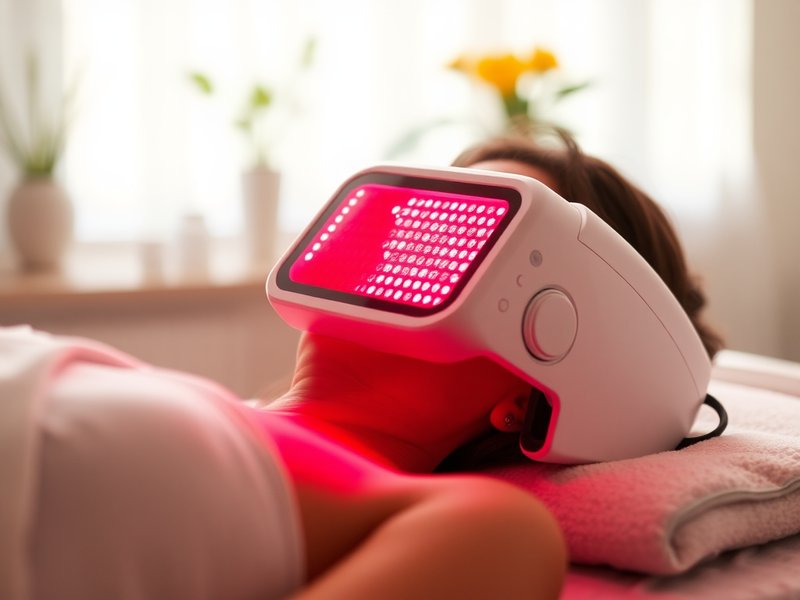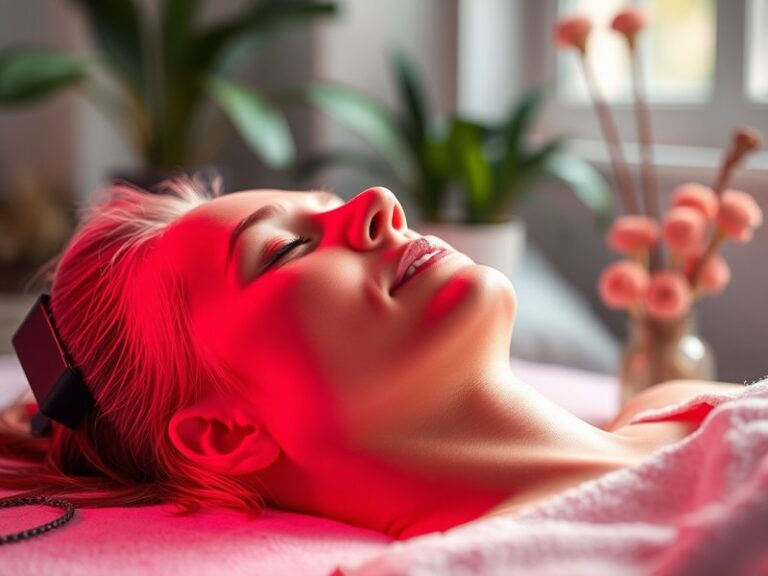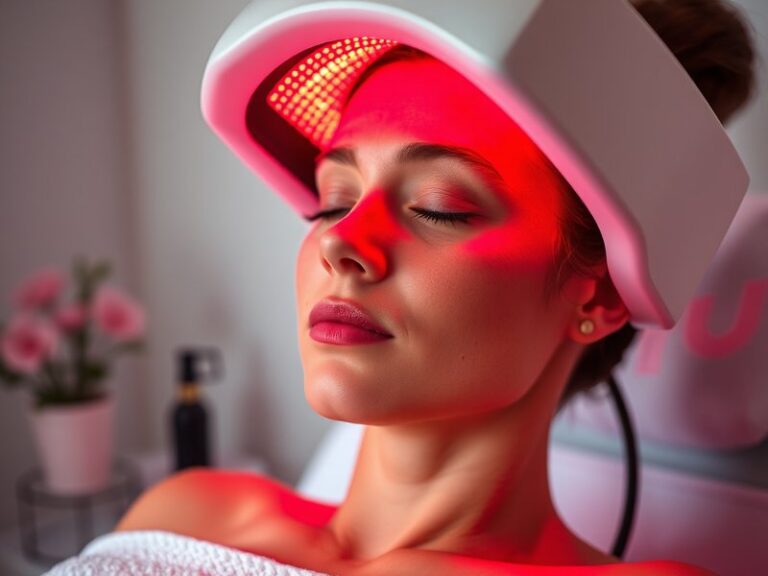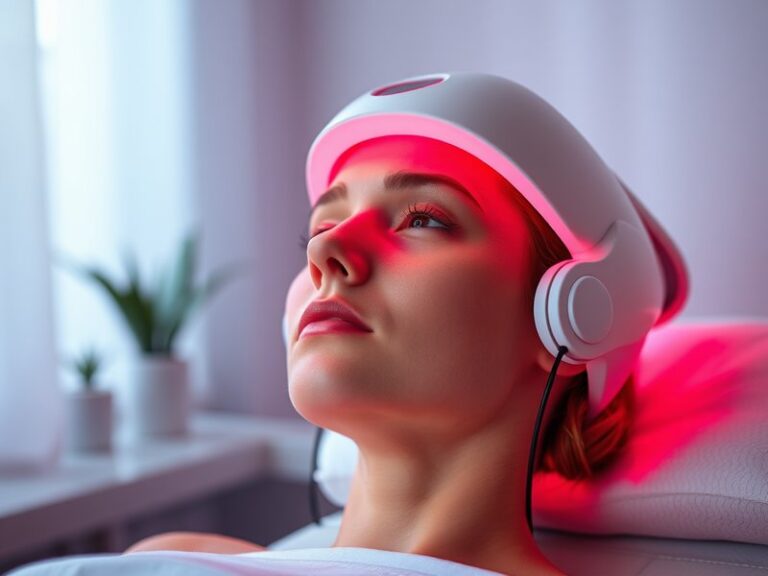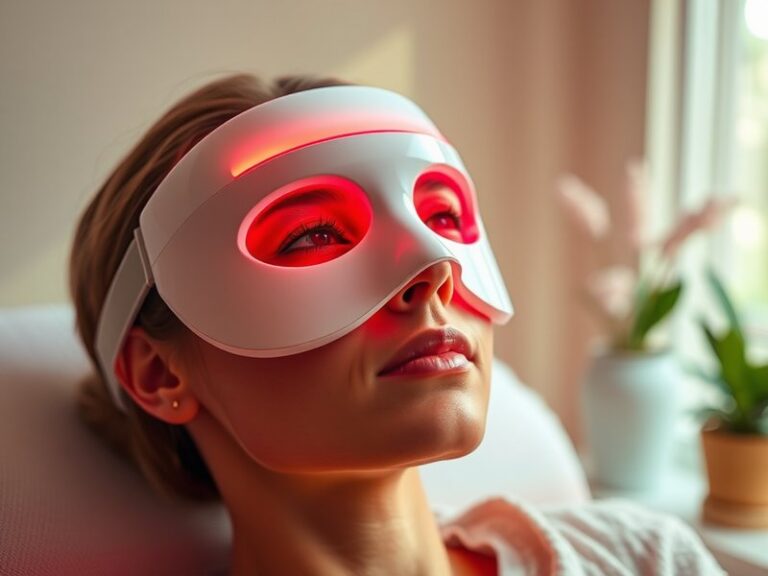How Many Times A Week Should You Use Red Light Therapy?
How Many Times A Week Should You Use Red Light Therapy?
Are you curious about how often you should indulge in red light therapy to harness its full benefits? Understanding the right frequency for red light therapy is essential to optimize its effects on your skin and overall wellness.
This article will explore how many times a week you should use red light therapy, the benefits of this treatment, considerations before starting, and potential alternatives. By the end, you’ll have a thorough understanding of how to incorporate red light therapy effectively into your routine.
Key Takeaways
- Frequency matters: Using red light therapy 3 to 5 times a week is generally recommended for optimal results.
- Varied benefits: Red light therapy offers advantages such as improved skin health, reduced inflammation, and enhanced muscle recovery.
- Consider individual needs: Factors such as skin type, health goals, and device quality can influence the frequency of use.
What is Red Light Therapy?
Red light therapy (RLT) is a non-invasive treatment that uses low-level wavelengths of red light to penetrate the skin and stimulate cellular activity. This therapy has gained popularity in recent years for its potential healing and rejuvenating effects.
RLT works by targeting the mitochondria, the powerhouse of the cell, which increases ATP (adenosine triphosphate) production. This process helps to promote healing, reduce inflammation, and improve overall skin appearance.
Discover the details in Uses of Red Light Therapy
Red light therapy devices include LED masks, handheld units, and larger panels designed for use at home or in professional settings. Its versatility makes it accessible for many individuals seeking rejuvenation or pain relief.
What are the Benefits of Red Light Therapy?
Incorporating red light therapy into your routine can yield numerous benefits. Here, we will delve into some key advantages.
Improved Skin Health
Red light therapy can enhance collagen production, which is crucial for maintaining skin elasticity and reducing wrinkles. Studies have shown that regular use can result in firmer, smoother skin and help to treat conditions such as acne and rosacea.
Reduced Inflammation
Red light therapy has been recognized for its anti-inflammatory properties. It can help alleviate symptoms of inflammatory skin conditions and ailments like arthritis, providing relief and promoting faster recovery.
Enhanced Muscle Recovery
Athletes often use red light therapy to speed up muscle recovery after workouts. By increasing blood circulation and reducing oxidative stress, RLT can alleviate soreness and enhance performance.
Improved Hair Growth
RLT may stimulate hair follicles, making it a potential treatment for androgenetic alopecia (pattern baldness). Regular use can promote thicker and healthier hair growth.
Enhanced Mood and Sleep Quality
Exposure to red light can also help regulate circadian rhythms, improving sleep quality. Furthermore, the calming effects may enhance your overall mood, contributing to a sense of wellbeing.
Find out the truth in Does Insurance Cover Red Light Therapy?
Is it Possible to Overuse Red Light Therapy?
While red light therapy is generally considered safe, it’s vital to understand the potential impacts of overusing this therapy. Some users might assume that more sessions would equate to quicker or enhanced results; however, that’s not always the case.
What are the Advantages of Moderation in Usage?
Moderating your red light therapy sessions helps to balance benefits and avoid skin sensitivity or fatigue. It ensures that your body can appropriately respond to the therapy without experiencing adverse effects.
What are the Disadvantages of Overuse?
While RLT is low risk, overexposure can lead to skin irritation or a temporary imbalance in your body’s natural processes. Listening to your body and adjusting your routine as necessary is critical to achieving the best results.
What are the Things to Consider Before Starting Red Light Therapy?
Before diving into a red light therapy regimen, consider the following factors to ensure you’re fully prepared.
Device Quality
Selecting a high-quality red light therapy device is essential. Look for products with verified wavelengths of 600-650nm for red light and 800-850nm for near-infrared light, as this range is most effective for treatment.
Skin Type and Sensitivities
Your skin type may affect how often you can use red light therapy. Individuals with sensitive skin might need to start with fewer sessions per week and gradually increase usage based on their skin’s tolerance.
Health Conditions
Certain health conditions, medications, or skin treatments might influence your ability to use red light therapy. Consulting with a medical professional before starting is advisable, especially if you have underlying health issues.
Time Commitment
Evaluate your schedule to ensure you can consistently commit to the therapy sessions. Consistency is key in enjoying the benefits of red light therapy.
What are the Alternatives to Red Light Therapy?
If red light therapy doesn’t suit your needs or interests, there are several alternative treatments worth considering.
Blue Light Therapy
Blue light therapy is primarily used for treating acne by targeting the bacteria that cause breakouts. Although different from RLT, it also offers skin benefits and can be an effective alternative for those struggling with acne issues.
LED Mask Treatments
Similar to RLT, LED masks use various light wavelengths to address skin concerns, including anti-aging and pigmentation. These devices can provide a wide range of benefits based on the light spectrum used.
Chemical Peels
Chemical peels exfoliate the skin and can improve texture, tone, and the appearance of fine lines. While they are more invasive than RLT, they can also be highly effective for skin rejuvenation.
Microdermabrasion
This treatment mechanically exfoliates the skin to remove dead skin cells, promoting new cell turnover and leaving your skin looking healthier. It can be used in conjunction with red light therapy for enhanced results.
Conclusion: Is it Recommended to Use Red Light Therapy Weekly?
In summary, incorporating red light therapy into your routine 3 to 5 times a week can yield substantial benefits for skin health, inflammation reduction, muscle recovery, and more. Be sure to consider individual factors such as device quality, skin type, and health goals to determine the best schedule for you.
As always, consulting with a health professional before beginning any new treatment regimen is advisable to ensure that red light therapy is suitable for your unique needs.
Frequently Asked Questions
How long should each red light therapy session last?
Most sessions last between 10 to 20 minutes, depending on the specific device and treatment area. Follow the manufacturer’s guidelines for best results.
Can red light therapy be used on all skin types?
Yes, red light therapy is generally safe for all skin types. However, individuals with specific skin conditions should consult a dermatologist before starting treatment.
Will I see immediate results from red light therapy?
Many users report immediate effects, such as improved skin texture or reduced pain. However, optimal results typically develop over several weeks of consistent use.
Is red light therapy safe for at-home use?
Yes, most at-home RLT devices are safe to use. It’s crucial to follow the product instructions and safety guidelines to ensure effective and safe usage.
How does red light therapy differ from other light therapies?
Red light therapy primarily uses wavelengths that promote cellular healing and rejuvenation, whereas other therapies, like blue light, target specific conditions like acne. Each type has its unique benefits and applications.
